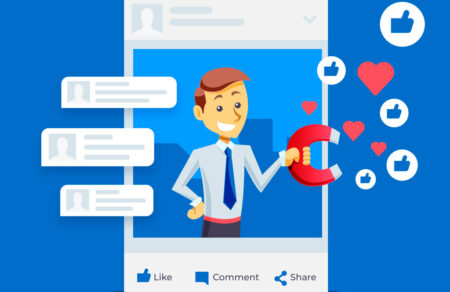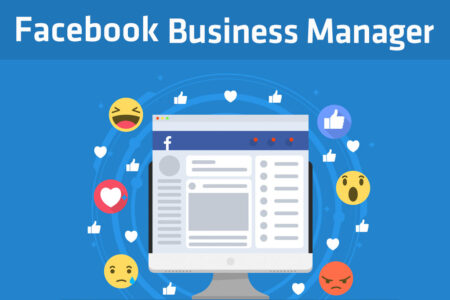Knowing what your customers think about you has a real effect on your customer service, product development and marketing. Social listening is a great way to gain insight.
Social media is a living organism. Every minute of every day, thousands of people post something on social media networks – and not just about their personal lives. More messages than you’d think are about businesses, brands, products and CEOs. People boast about what they bought over the weekend, recommend their favorite restaurants to their followers, and publicly criticize everything and everyone.
Wouldn’t you like to know what they say about your brand?
For businesses, what their customers think about them isn’t just a matter of curiosity. It has a real effect on customer service, product development, marketing and sales.
That’s where social listening enters the stage.
What is social listening?
Social listening is the process of tracking mentions of keywords on social media networks, news, blogs, forums and the web. You can track any words, word combinations or phrases. In most cases, these are brand names, personal names, product names, book titles, etc. But you can also find mentions of your industry (e.g., toy stores, steakhouses in London, fitness apps), campaign hashtags and vacancies.
Of course, this isn’t done manually. Social listening is performed by social listening tools (shocking, isn’t it?). These tools crawl the sources you’re interested in and gather mentions from all of the social media, news, blogs, etc. in one dashboard. From there, you can either work with social media posts and articles that mention your keyword one by one, or you can analyze this data in bulk to get big data results.
Where do you start?
For most businesses, the first step would be to monitor their own brand and assess the state of their online presence.
1. Set up an alert for your brand.
The process of setting up an alert is straightforward in most social media listening tools. When setting up an alert, don’t forget to include not only your brand name, but also its common misspellings, abbreviations and social media handles as separate keywords.
Also, if your name is a very common or unusually formatted word (e.g., an abbreviation or written with symbols), use Boolean search to make a more detailed search query.
After you’ve created the alert, give the tool some time to crawl the sources and gather the mentions. Social media posts are collected almost in real time, while other websites take longer.
2. Look at the mentions feed.
Every social listening tool has a feed where all your mentions are collected. To discover what your customers and target audience think about your brand, go to the mentions feed and look through the posts. It’s usually possible to filter the results and look at mentions from a specific source (e.g., only Facebook), location, language, gender, etc. It’s also often possible to look only at negative or positive mentions, which is very useful for improving your customer service and preventing bad comments from spreading on social media (we’ll talk more about that later).
In some tools, you can reply to mentions without leaving the dashboard, or you can delegate this task to someone from your social media management or customer service team.
3. Look at the analytics.
To get a full understanding of where you’re at as a brand, go to your analytics. The metrics you’ll see depend on the tool, but generally, social media analytics break down into two categories:
- Mentions analytics: You’ll see how the number of your mentions has grown over time, how many people can potentially see the mentions, and the overall sentiment of your brand’s mentions (positive, negative or neutral). You’ll also see the location, languages, and sources of the mentions and the topics that come up the most with your keywords.
- Authors analytics: You’ll discover more about your target audience and your customers – their demographics, interests, professions, level of income, etc.
What do you do with this information?
1. Customer service
Customer service is one of the most popular use cases for social listening. This is because 60% of customers expect brands to respond to their social media post within an hour, and 68% report leaving a company because of unsatisfactory customer service. Yet, fewer than 30% of brand mentions on social media include the brand handle. This means that most of the complaints, comments and questions go unanswered simply because social media managers don’t see them.
For small businesses, it’s often easier to win over the competitors’ customers with better customer service. They often respond to negative mentions straightaway and work hard to raise engagement – such as by replying to positive and neutral brand mentions with appreciation and humor.
2. Reputation management
Information spreads incredibly fast online. A company usually only notices a social media crisis when it has already spread to news sites and affected sales – when it’s too late and there’s nothing left to do but issue a company apology for whatever the media wants. As a social listening user, though, you can regularly check the sentiment around your brand for spikes of negative mentions to spot a rising problem in time. You’ll get to see fluctuations in your brand reputation and spot what this depends on: social media campaigns, product launches, (un)fortunate brand advocates or something else completely. Regularly observing brand reputation gives small business owners a good idea of how their marketing and customer service teams are doing.
3. Competitor analysis
As I’ve pointed out before, monitoring your brand is the necessary first step. The second obvious one is to monitor your main competitors. By doing that, you can understand your share of voice on social media – the level of conversation in your industry attributed to your brand in relation to your competitors’ brands. You also get to see your competitors’ strengths and weaknesses on social media and overall: You’ll discover what their customers praise most and what they complain about the most, which of their marketing and PR campaigns were received well and which drew backlash or were completely ignored, and so on. Finally, you’ll gain insight into your competitors’ audience – their locations, languages and demographics – and be able to adjust your own perception of your target audience to a more realistic one.
4. Product feedback
Collecting feedback isn’t easy. Focus groups and feedback questionnaires are biased by the questions asked and quickly become outdated. Of course, this doesn’t mean you should cancel focus groups and questionnaires; adding social listening to the mix will greatly improve the quality of your feedback. Monitoring your brand (and your product, if it has a specific name) provides you with regular feedback from people who want to talk about it. Collecting this feedback over time gives you a much better understanding of how your product is perceived by your customers and what you can do to improve it.
5. Influencer marketing
Most social listening tools will show you a list of relevant influencers – people who have a large following and often mention your keywords. If your keyword is your brand, then the list will be of brand advocates – active social media users who already know your brand and talk about it in front of their audience. Collaborating with such influencers is likely to be easy, as they already know your brand. And more mentions of your brand means more brand awareness and sales for you.
Another thing you can do is monitor your industry. Then, the list will be of industry influencers: active social media users with a large following who talk about your industry but don’t know about your brand yet. Reaching out to these people with information about your brand and a marketing proposal can yield amazing results.
What else can you do with social listening tools?
Lead generation
Lead generation is one of the biggest challenges in marketing. With some tools and in some industries, though, you can generate leads with social selling. Social selling is about finding potential customers on social media and reaching out to them.
As you might expect, the searching part is performed by a social listening tool. All you have to do is create a query with Boolean search that uses the words to signal the author’s interest in the product (“can anyone recommend,” “looking for,” etc.) and the name of the product (e.g., “fitness app,” “Polish restaurant Brighton”).
Another option is to search for the combination of your competitor brands and negative keywords. For example, you could search “brand X alternative” or “unhappy with brand X.” When you find the relevant posts, you can engage with those customers and offer a good alternative, a discount or another incentive. That person will likely be tempted to check out your brand.
Public relations
As social media listening tools focus more on social networks, their PR benefits are often ignored. However, most of the paid social listening tools can easily find relevant press releases and articles that mention your company and brand. This monitoring is helpful for PR teams. Besides, they can monitor your competitors’ online coverage to find new platforms and new journalists for you to work with.
Social media listening is a multifaceted field that has a dozen applications. Depending on your goals, it’s up to you as a company to prioritize market research, customer service, new marketing tactics or any other applications described above. Perhaps you can even come up with a completely new use for social listening!




